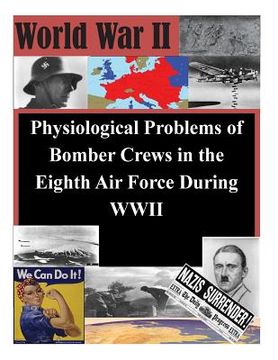Compartir
Physiological Problems of Bomber Crews in the Eighth Air Force During WWII (en Inglés)
Air Command and Staff College
(Autor)
·
Createspace Independent Publishing Platform
· Tapa Blanda
Physiological Problems of Bomber Crews in the Eighth Air Force During WWII (en Inglés) - Air Command Staff College
$ 15.210
$ 30.420
Ahorras: $ 15.210
Elige la lista en la que quieres agregar tu producto o crea una nueva lista
✓ Producto agregado correctamente a la lista de deseos.
Ir a Mis Listas
Origen: Estados Unidos
(Costos de importación incluídos en el precio)
Se enviará desde nuestra bodega entre el
Viernes 07 de Junio y el
Miércoles 19 de Junio.
Lo recibirás en cualquier lugar de Chile entre 1 y 3 días hábiles luego del envío.
Reseña del libro "Physiological Problems of Bomber Crews in the Eighth Air Force During WWII (en Inglés)"
Aviation physiology is a highly relevant field to flyers of unpressurized aircraft that flew at altitudes in excess of 25,000 feet. Crew members had to contend with severe environmental factors while flying long bombing missions during WWII. The limits of human physiology must be the main concern of any battle plan involving flyers and fatality/mortality rates should be the primary focus in evaluating the success or failure of such a plan. The purpose of this research project is to determine if human factors were overlooked intentionally or by accident. If they were overlooked unintentionally, then what was done to resolve the physiological problems of the aircrews? The project will also underscore the continued need to address the human machine during any plan in today's demanding aviation environment.Chapter one explores whether or not the limits of the human being was taken into account when the WWII bombing planners developed AWPD-1. It provides an insight into why AWPD-1 was created without regard to the aircrew members, and how this neglect could have possibly been remedied. Chapter two examines the machines of the day, in particular the B-17, to see if it was ready to carry out the assigned missions envisioned by the war planners. The early wartime experience of the B-17 by the Royal Air Force was disappointing, but nevertheless it was looked upon by the United States Army Air Force (USAAF) as the ultimate bomber that could complete any assignment. This chapter also provides some insight into a "typical" mission the B-17 aircrew had to endure and the aircraft's ability to carry out the assigned bombing missions. Chapter three deals with the physiological problems experienced by the aircrews and what was done to alleviate them. Chapter four focuses on the non-combat accident rates of the Eighth Air Force, what they meant, and how the leadership reacted to them. The last section is a conclusion of the research findings. It provides suggestions as to why the leadership did not do enough to arrest the accident rates, and what could have been done to increase aircrew survival.
- 0% (0)
- 0% (0)
- 0% (0)
- 0% (0)
- 0% (0)
Todos los libros de nuestro catálogo son Originales.
El libro está escrito en Inglés.
La encuadernación de esta edición es Tapa Blanda.
✓ Producto agregado correctamente al carro, Ir a Pagar.

